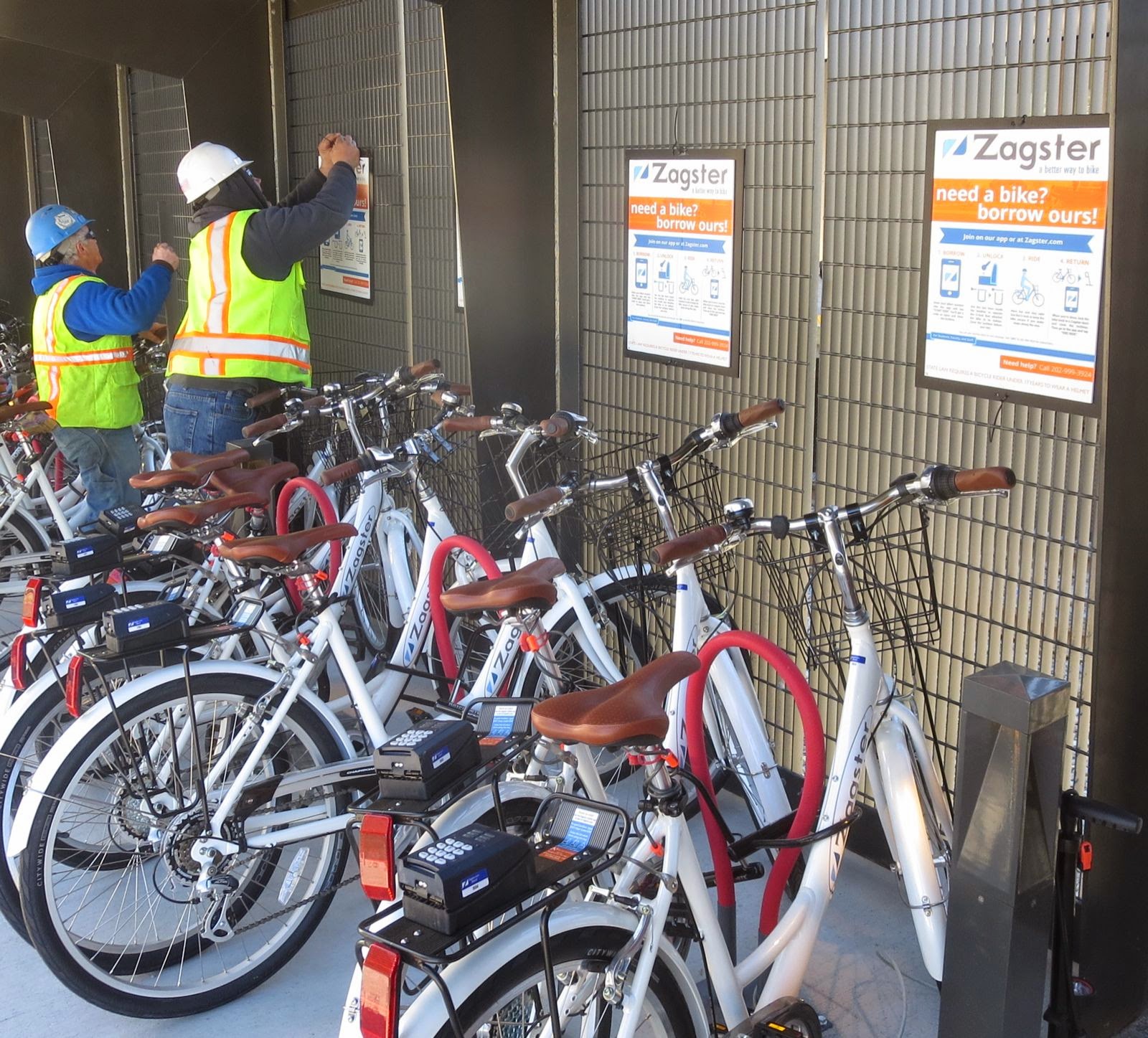This coffee-centric still-life of the new Dinky station seeks to show that there is life after death. After long mourning over the moving of the station, a morning comes when sunlight plays upon gleaming glass, metal and stone. People can see sun or shadow as they please, and seek to drown lingering sorrows in the Wawa's grand-opening weekend's free coffee.
Looking north from the new station, some may see a highly symbolic giant gash in the ground, spanning the grieved and grievous 460 feet from old station to new. It's as if the ground finally collapsed under the weight of connotation that distance acquired. But others will see the old station buildings still intact--a cafe and restaurant to come--and underpinnings being set in place for a new arts campus to rise.
The new platform's canopy is an inversion of the old, with "v" pointing down rather than up, and combines with the Lot 7 parking structure across the tracks to give a strong metallic feel.
The waiting room echoes the canopy's "V" shape in its ceiling, and the progression of pillars in its southern wall. As one of the far too few buildings in town purposefully oriented for passive solar heating, it's more welcoming to people on a chill fall day because it welcomes the sun as well.
The wooden benches were designed by George Nakashima of New Hope.
Usually, a passive solar building will have a broad overhang on the south side, to shade the windows in the summer. Instead, the university planted a grove of 6' caliper honey locust trees tall enough to shade the station when they sprout leaves this coming spring.
Botanical aside: Honey locust trees are a popular choice for plazas. Their shade is open and airy, and their tiny leaves disperse unobtrusively in the fall. These are thornless varieties, as the wild honey locust has giant spines that once protected it from now extinct megafauna. Out in the parking and turnaround area are some Kentucky coffee trees, another native that is particularly well suited for making the most of solar heating in spring and fall. (Its seeds have the look but not the taste of coffee beans.) The tree drops its leaves very early in the fall, and leafs out very late in the spring. Interestingly, the seeds of both the honey locust and the Kentucky coffee tree were once eaten and spread by megafauna--those lumbering wooly mammoths, et al, that disappeared from North America just 13,000 years ago. Just as the wooly mammoth, in furriness and size, was adapted to very cold weather, the Kentucky coffee tree's short growing season seems tailored to much shorter summers and longer winters than we currently have. With no megafauna to spread their seed, these two tree species "don't get around much anymore", and depend on human fauna for the chance to pop up in plazas and next to parking lots.

Perhaps the trees will have dreams of megafauna past each time their roots sense the vibrations spread by the Dinky's arrival.
The shelter for bicycles runs parallel in placement and size to the train it's meant to complement.
The bikes seem to say "Don't leave me behind. Let me take a ride, too."
Workmen were putting the finishing touches on the bike borrowing self-service.
Interesting concept.
Another coffee-centric photo, of the inside of the Wawa on its first day open, just a few steps across the plaza from the train. This may be the first Wawa ever to have a big skylight over the cashier area,
and several slivery ones in the bathrooms that cast ethereal light on the proceedings. That may be why the woman collecting donations at the front door for a church's humanitarian efforts recommended the bathrooms so highly.
The bathrooms also have an Airblade hand dryer whose "420 mph sheets of air scrape water from hands, drying them quickly and hygienically", along with faucets that automatically turn on and off, and a waterless urinal (no photo, sorry). The forced air approach to hand drying avoids the waste of paper towels and the energy-intensive hot air of traditional hand dryers.
From the top of the parking structure next door, you can see the "green" roof of the Wawa, with circular skylight. The roof actually looks like a small hill, and should green up with plants come spring. Not your typical Wawa roof.
Seen from above, the arrival of the Dinky brought back a sweet memory of the train set I had as a kid--a mass transportation mecca laid out on a 4x8 piece of plywood in the basement.
Though there is lamentably no photo of my childhood train set, here's what it might have looked like if my big brother had come along, torn up some track, and inserted a center for the performing arts. How long would it have taken, after such an intrusion, before I could emerge from the shadows and walk in the sun once more? The Dinky offers its own answer, with an early morning "toot!" that yet and still begins each new day in Princeton.
(Previous writings on Big Bro's, a.k.a. Ma U's, relocation of the Dinky can be found here.)

















2 comments:
"It's as if the ground finally collapsed under the weight of connotation that distance acquired."
- brilliant!
Steve, thank you for this nicely balanced tour of the new facilities, which I haven't visited yet. You've found the silver linings in the situation, or should I say "solar" linings...
Post a Comment